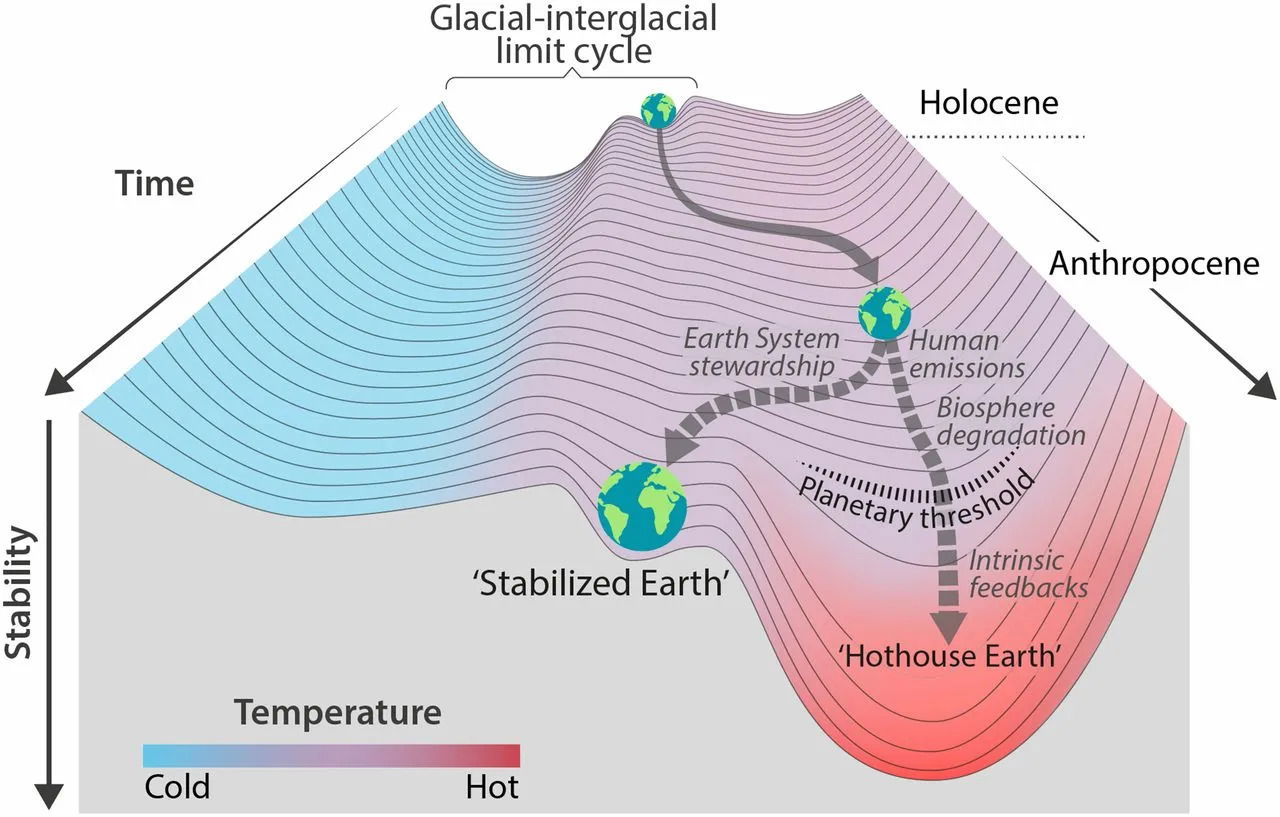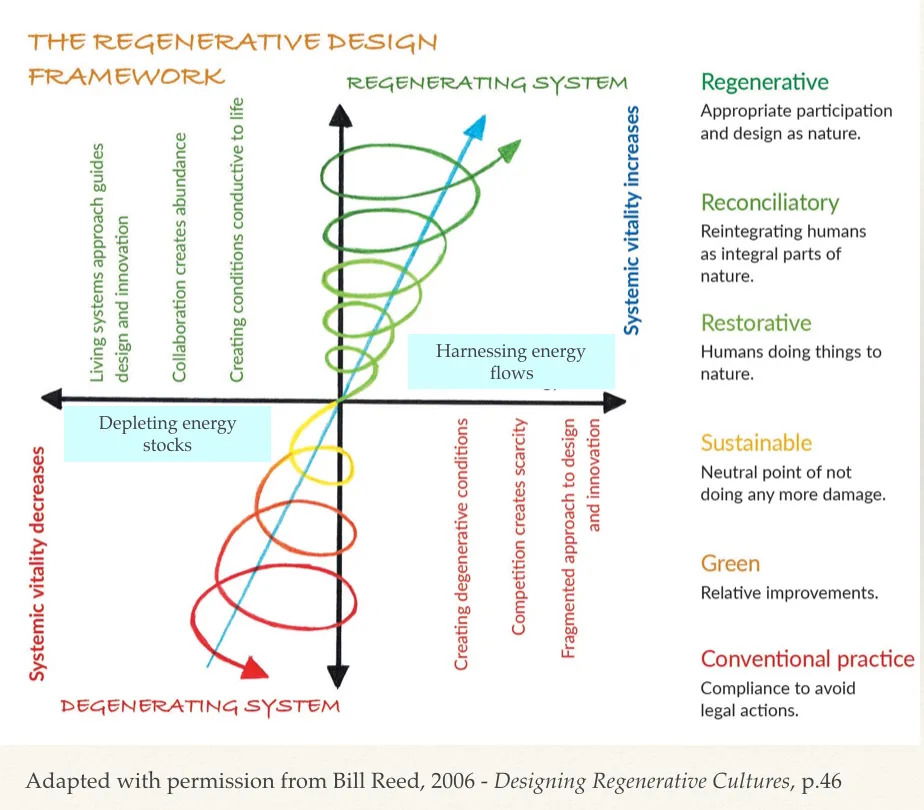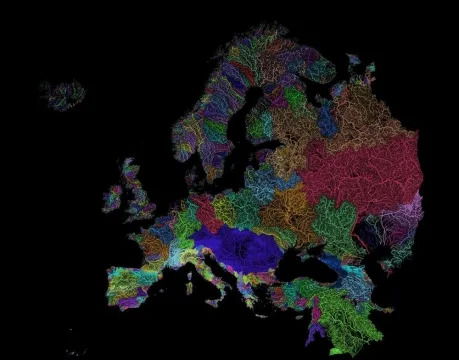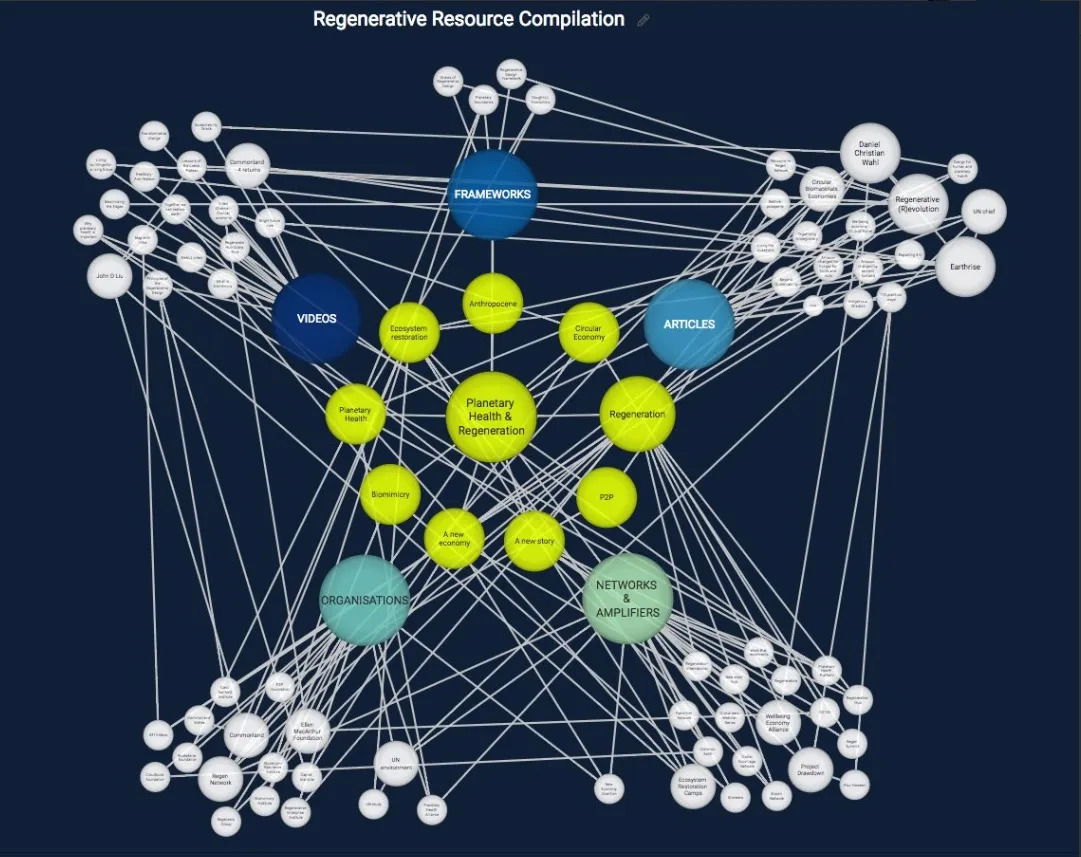Why sustainability is no longer enough, yet still very important, on the road to regeneration


· 6 min read
For many people achieving sustainability might seem already like a visionary goal that is difficult to reach. Yet, we need to do even better to respond adequately to the converging crises ahead.
Just looking at the situation with regard to climate change alone, we have to now face the reality that we are in the midst of dangerous run-away (self-reinforcing) climate change. The window of opportunity to avoid catastrophic irreversible climate change is closing.
In reality, there are already many climate catastrophes affecting people and biodiversity around the world. Maybe we should speak of ‘irreversible cataclysmic climate change’ as that is what we are rushing towards if we do not fundamentally redesign the human presence and impact on Earth.
Figure 1. Trajectories of the Earth System in the Anthropocene

Source: Steffen et al. (2018)
Let me talk you through a framework developed by my friend and colleague Bill Reed, together with the team at Regenesis Group and in collaboration with Carol Sanford. It explains why we need to do more than just be sustainable and also why sustainability is still very important as a milestone along the road to regeneration.
As we move from business as usual — complying with minimum regulations enough to stay out of jail — to “green” we start to celebrate ourselves or our company for voluntarily doing a little less damage than we are legally allowed to get way with. It is true that this could be called ‘green washing’ and yet it is also a step in the right direction, even if only in response to growing public demand for companies to become part of the solution rather than the problem.
When we reach being “sustainable” we have arrived at the neutral point. Bill McDonough likes to say: “sustainable means 100% less bad”. It means not adding any more damage, but after 250 years of industrialization and 5000 years of deforestation and agriculture that is no longer enough.
We need to do more than simply be sustainable. We have to begin to reverse the damage we have already done! It is also important to point out that there are many people working on sustainability projects who hold a deeper vision for sustainability that is very much akin to what this article describes as ‘regenerative’.
So the next stage on this spectrum in which one stage transcends and includes the other is to practice restorative design. That is to say, we reforest and engineer — often large-scale interventions in ecosystems. Yet, we do so from a mindset of humanity as master over nature. The result is, for example, large monoculture plantations of Eucalyptus in already water-stressed areas.
Only if we take the step towards reconciling nature and culture & embrace uncertainty as being fundamental to the dynamics of the complex socio-ecological systems we participate in will we be able to chart our path into the future through appropriate participation in the way that life creates conditions conducive to life.
Merely being sustainable is no longer enough, we need to learn to design as nature, engage in regenerative design and development, and create diverse regenerative cultures elegantly adapted to the bio-cultural uniqueness of place. Such cultures would design as nature understanding themselves as healers of local ecosystems and humble caretakers of the community of life — biodiversity — that shares a unique place with us.
Figure 2. The regenerative design framework

In the process of global-local (glocal) collaboration in regionally focussed and locally implemented regenerative development, we are matching people to their places again. Meeting the needs of people through elegant solutions that pay attention to the story of place, the uniqueness of local culture and local ecosystems, and the opportunity and challenges that arise from those.
This 90-second video was recorded in March 2015 at the European Institute of Design in Madrid.
There is a groundswell of activity around the planet bearing testimony that many of us have not given up yet nor are longer willing to let the shortsightedness and greed of a few put an early end to our promising but still young and somewhat immature species.
The regenerative (r)evolution is well underway. The re-generation is rising to transform business-as-usual profoundly, just in time to avoid a global cataclysm.
To shift in time we need to be greener, more sustainable, engage in widespread ecosystems restoration, reconcile nature and culture and change the guiding cultural narrative about who we are and what we are here for. Regenerative development works with and builds on all of the stages in the spectrum.
Just because the term ‘regenerative’ is gripping people’s imagination, we should not dismiss the need for more sustainable practices, we simply need to see them as steps along the way and integrate them into a regenerative regional development process that involves people in place.
There is a confluence of activities, frameworks, and initiatives that seems to agree on the need for bioregional transformation as the appropriate scale of implementation. We can improve planetary health bioregion by bioregion and ecosystem by ecosystem.
Figure 3. A river basin map of Europe by Robert Szücs. Watersheds offer good bio-physical integrity at a scale at which bioregional development can be focused and cities can be regeneratively reintegrated into their surrounding regions.

Regeneration, planetary health, resilience building, and regional ecosystems restoration are activities that mutually reinforce each other and help us to both begin the process of reversing climate change and prepare for the decades ahead when despite our best efforts climate chaos will lead to localized breakdowns and catastrophes.
Figure 4. Regenerative resource compilation

The promise ahead — if we unite in global solidarity and bioregional collaboration to redesign our impact on Earth — is that towards the latter half of this century, we will begin to see atmospheric concentrations of CO2 and other greenhouse gases decline. Climate patterns will begin to re-stabilize as global forest cover drastically increases, biodiversity loss slows down rapidly, and bioproductivity increases as healthy ecosystem functions are restored.
If we — our species — manage to not just prevail, but thrive and flourish in the 22nd century and beyond, if we pass through and grow wise as we undergo a species-level right of passage that lies ahead of us, if we co-create a thriving future by redesigning the human impact on Earth, if we become a mature species that creates conditions conducive to life, then we will look back at the 21st century as the Century of Regeneration.
A lot of ‘if’s? Allied with the community of life and committed to each other, we can achieve these transformations. It will be worth it. Let me be frank: the alternative will be a hothouse planet that is uninhabitable for higher life forms like us. It is time to come home into the family of life. Regeneration rising!
“Whoever you are, no matter how lonely, the world offers itself to your imagination, calls you like the wild geese, harsh and exciting — over and over announcing your place in the family of things.”
— Mary Oliver
This article is also published on the author's blog. illuminem Voices is a democratic space presenting the thoughts and opinions of leading Sustainability & Energy writers, their opinions do not necessarily represent those of illuminem.
Barnabé Colin

Biodiversity · Nature
illuminem briefings

Biodiversity · Nature
Gokul Shekar

Effects · Climate Change
ESG News

Carbon Removal · Biodiversity
The Washington Post

Biodiversity · Nature
The Ecologist

Pollution · Public Governance